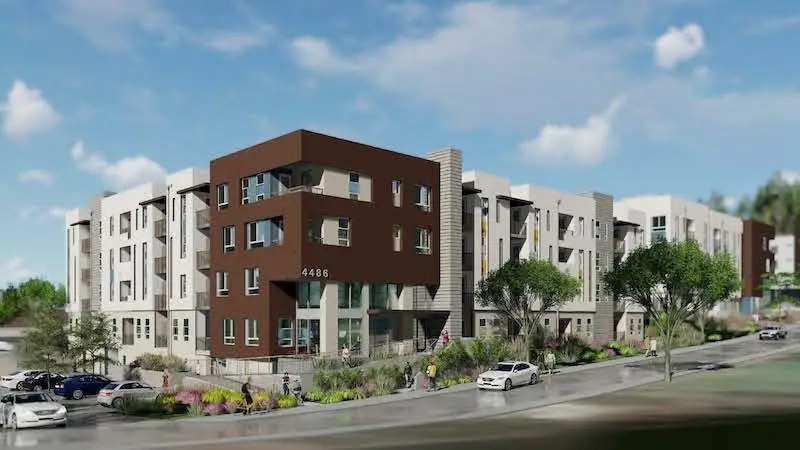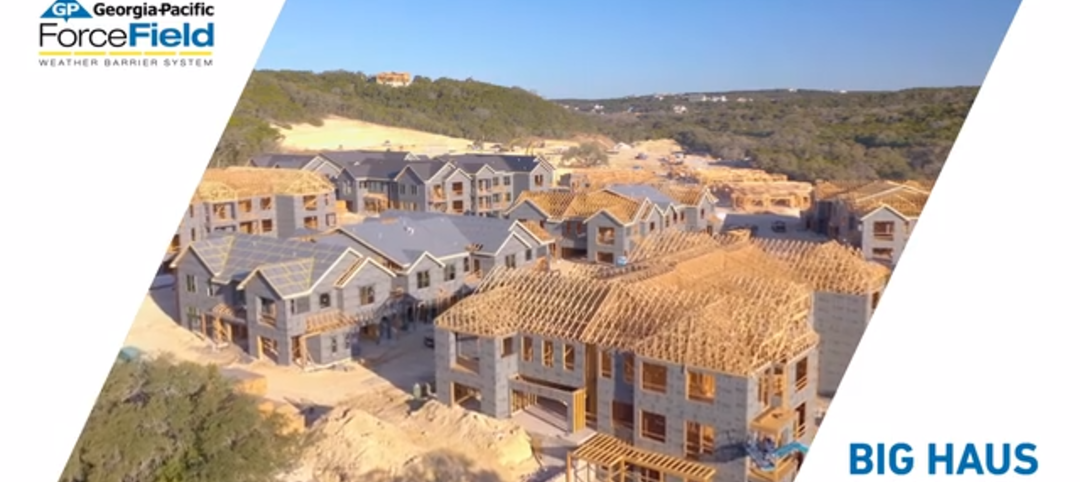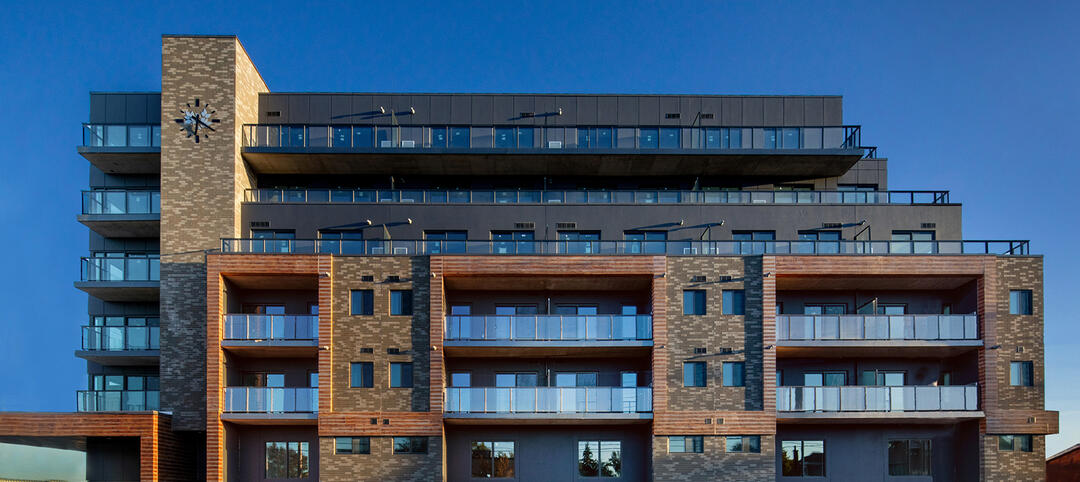Built in 1942, Rose Hill Courts is one of Los Angeles’ oldest public housing complexes. And led by a team that includes the Housing Authority of the City of Los Angeles (HACLA), the developer Related California, and the general contractor R.D. Olson Construction, the first phase of Rose Hill Courts’ redevelopment and expansion is underway to construct two Type V-A four-story wood-frame buildings with 51 and 38 units, respectively, and ground-level surface parking spaces.
Upon completion, this project will nearly double Rose Hill Courts to 185 affordable housing units for low, very low, and extremely low income families, and replace its existing 100 units set on five acres.
The two new buildings in phase one are designed to achieve LEED certification, and their construction is scheduled for completion at the end of next year. Totalling 103,000 sf, the two buildings will offer 51 one-bedroom, 26 two-bedroom, eight three-bedroom, and four four-bedroom apartments. One building will also have a 3,000-sf underground basement that makes use of an adjacent hill.
A GC COMMITTED TO AFFORDABLE HOUSING
R.D. Olson partnered with Withee Malcolm Architects on this project. Resource Environmental Inc., a hazardous material abatement and demolition contractor, performed abatement and demolition work that was completed prior to the financial closing and construction that started in June.
The Rose Hill Courts redevelopment is R.D. Olson’s fourth affordable housing project within a 10-mile radius of Los Angeles. “We bring the right experience along with well-established relationships in the community, and are successfully navigating the challenges of keeping the remaining 70-year-old residences operational during phase one of construction,” says Bill Wilhelm, R.D. Olson’s president.
Also see: L.A.’s component-based interim housing
According to HACLA’s website, phase two of the redevelopment will include 95 affordable apartment homes that target very low and extremely low income residents. Once both phases are completed, the redevelopment will include a 6,300-sf community building with and on-site property management office and social services, and a “Central Park” green space with shaded seating, barbeque grills, courtyards, and children’s play areas with “tot lots” for resident use.
Both phases will feature surface parking, a secured interior bike room, bike racks, entirely new landscaping, lighting, fencing, signage, security features, storm-drain and utility improvements. The new sustainably designed buildings will utilize solar power and the landscaping will include water-efficient irrigation and storm water reuse.
A HOMELESS PROBLEM THAT’S GETTING WORSE
Phase 1 of the redevelopment is financed with $31.8 million in tax-exempt bonds and $13.9 million in private equity raised through the sale of federal low-income housing tax credits. HACLA will provide up to $8.35 million during construction. This phase of redevelopment will also be supported by $15.5 million in funding from the State of California department of Housing and Community Development through the Affordable Housing & Sustainable Communities and Infill Infrastructure Grant programs.
In addition, $8 million in AHSC grant funds were awarded to the City of Los Angeles to provide pedestrian safety upgrades in the immediate neighborhood and improvements in public transportation including six new bus shelters and eight battery electric buses.
The Rose Hill Courts redevelopment is occurring at a time when homelessness in southern California has been rising. On any given night there are more than 66,000 people homeless in Los Angeles County, and 739 homeless died in the county in the first six months of 2021, 20% more than during the same period in 2020. In July, L.A. County approved $527.1 million in funding to battle homelessness in fiscal 2012-22.
Related Stories
BAS and Security | Oct 19, 2022
The biggest cybersecurity threats in commercial real estate, and how to mitigate them
Coleman Wolf, Senior Security Systems Consultant with global engineering firm ESD, outlines the top-three cybersecurity threats to commercial and institutional building owners and property managers, and offers advice on how to deter and defend against hackers.
Codes and Standards | Oct 17, 2022
Ambitious state EV adoption goals put pressure on multifamily owners to provide chargers
California’s recently announced ban on the sale of new gas-powered vehicles starting in 2035—and New York’s recent decision to follow suit—are putting pressure on multifamily property owners to install charging stations for tenants.
Multifamily Housing | Oct 7, 2022
Design for new Ft. Lauderdale mixed-use tower features sequence of stepped rounded volumes
The newly revealed design for 633 SE 3rd Ave., a 47-story, mixed-use tower in Ft. Lauderdale, features a sequence of stepped rounded volumes that ease the massing of the tower as it rises.
Multifamily Housing | Oct 5, 2022
Co-living spaces, wellness-minded designs among innovations in multifamily housing
The booming multifamily sector shows no signs of a significant slowdown heading into 2023. Here is a round up of Giants 400 firms that are driving innovation in this sector.
Fire and Life Safety | Oct 4, 2022
Fire safety considerations for cantilevered buildings
Bold cantilevered designs are prevalent today, as developers and architects strive to maximize space, views, and natural light in buildings. Cantilevered structures, however, present a host of challenges for building teams, according to José R. Rivera, PE, Associate Principal and Director of Plumbing and Fire Protection with Lilker.
| Oct 4, 2022
Rental property owners want access to utility usage data for whole properties
As pressure from investors for ESG reporting mounts, owners of multifamily properties increasingly look to collect whole-building utility usage data.
Resiliency | Sep 30, 2022
Designing buildings for wildfire defensibility
Wold Architects and Engineers' Senior Planner Ryan Downs, AIA, talks about how to make structures and communities more fire-resistant.
Sponsored | Multifamily Housing | Sep 16, 2022
In-Stock Sheathing System Saves Multifamily Project Timeline
Multifamily Housing | Sep 15, 2022
Toronto’s B-Line Condominiums completed using prefabricated panels
B-Line Condos, Toronto, completed using Sto Panel Technology.

















